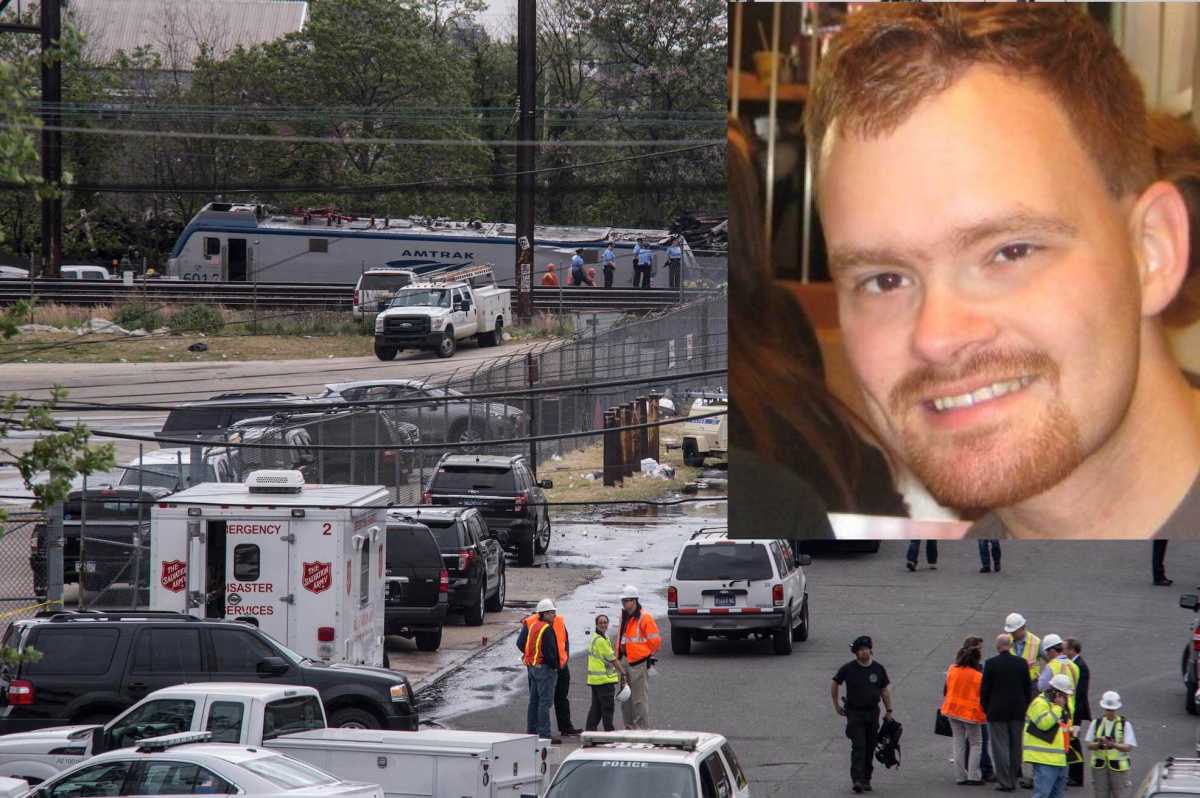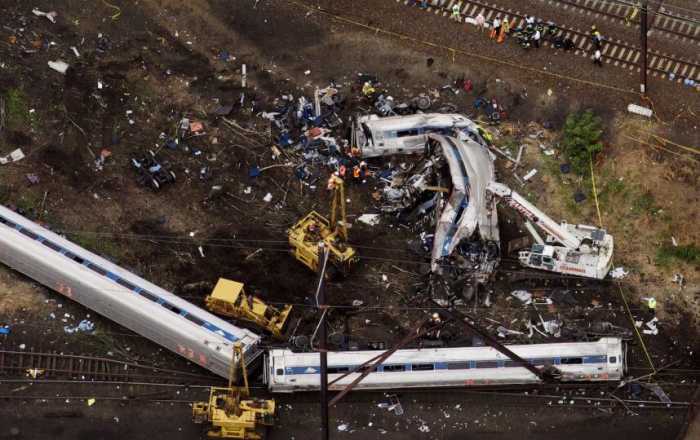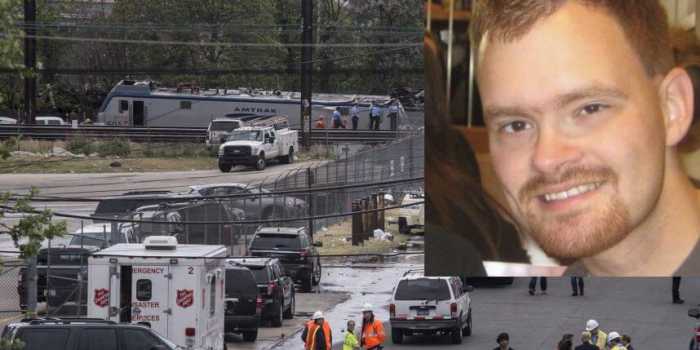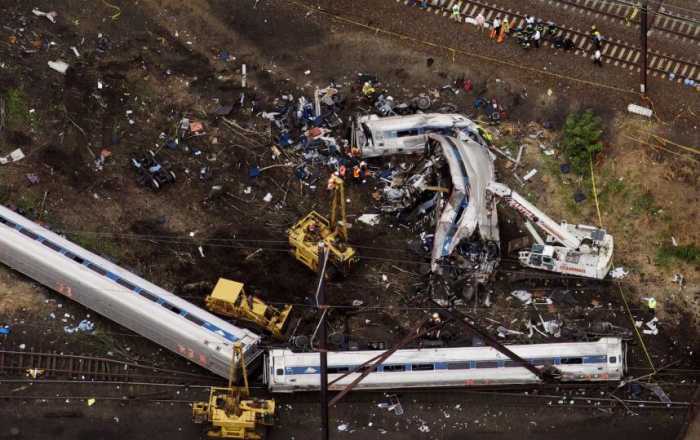The National Transportation Safety Boardwill announce on Tuesday the “probable cause” of the Amtrak #188 derailment in Philadelphia that killed eight people and injured more than 200 passengers. The derailment occurred on May 12, 2015, at one of the sharpest curves along the Northeastern railroad corridor, as the train, traveling at 106 miles per hour in a 50 mile-per-hour speed-limit zone, flew off the rails just minutes outside of Center City. At Tuesday’s meeting, National Transportation Safety Board (NTSB) members will review details from the docket of investigatory materials previously made public in February before members vote to determine the crash’s “probable cause.” RELATED: Read the interview with doomed Amtrak train’s engineer Brandon Bostian Amtrak #188 was traveling from Washington, D.C., through Philly en route to New York City at the time of the crash.
Speculation about the cause of the derailment has focused on the engineer, Brandon Bostian, who told investigators he doesn’t remember what caused the crash. His last memory before hitting the curve where the train derailed was accelerating, he told NTSB investigators. “I pushed the throttle forward in order to accelerate from 70 to 80. And I don’ t remember anything from that point until after the train was already in the curve,” Bostian said.
In two interviews with the NTSB, the transcripts of which are available online, Bostian told investigators he was familiar with the rail route out of Philly. Amtrak rails do not have speed-limit signs or other markers. Engineers memorize visual cues along the tracks that tell them when to adjust speed. “After North Philadelphia, there are a few speed changes,” Bostian told NTSB investigators in his second interview, in November 2015. “One of the significant speed changes is there’s a 65-mph curve that leads into an 80-mph straightaway that leads into a 50-mph curve, I think, at Frankford Junction or around Frankford Junction area.” Frankford Junction, the curve in the tracks between Port Richmond and Kensington, was described by Bostian as something he remembered based on a SEPTA overpass before the curve, and because the curve looks like “a black abyss.” “For the 50-mph curve, it’ s difficult to see where the curve starts,” Bostian admitted in his testimony. “As that track curves to the left, it kind of, you’re looking into somewhat of a black abyss. … It would be easy to hit the curve a little bit hot by five or 10 mph if you weren’t being careful and looking very carefully at the cues because it can sneak up on you.” RELATED:Who is Amtrak engineerBrandon Bostian?
Bostian repeatedly cautioned in his interview with investigators that due to injuries he sustained in the derailment, he is uncertain of his memories from the night of the derailment. But he testified that after a recollection of accelerating to 80, the next thing he remembered was being in the curve at Frankford Junction and applying the brakes. “I remember feeling my body lurch to the right, towards the right side of the engine. I remember feeling as though I was going too fast around a curve,” Bostian told investigators, saying he first applied a 10-pound brake. “I realized from the force on my body, I realized that this is something that’ s very serious and I need to bring down the train speed quickly,” he added, stating he then applied full brakes, and then the emergency brake, as the train derailed. If Bostian lost his bearings while guiding the train, the cause of the derailment could be chalked up to a loss of “situational awareness” on the engineers part.
Experts have said that the derailment could have been prevented by “Positive Train Control” – automated braking technology that prevents trains from traveling above the speed limit, which was not in place on this section of track at the time of the crash. Amtrak activated the system between D.C. and New York in December 2015 to meet a federal deadline.
Lawsuits filed by those killed or hurt during the derailment against Amtrak are still pending.
NTSB to announce Tuesday ‘probable cause’ of Amtrak 188 derailment

Provided/Metro file photo




























